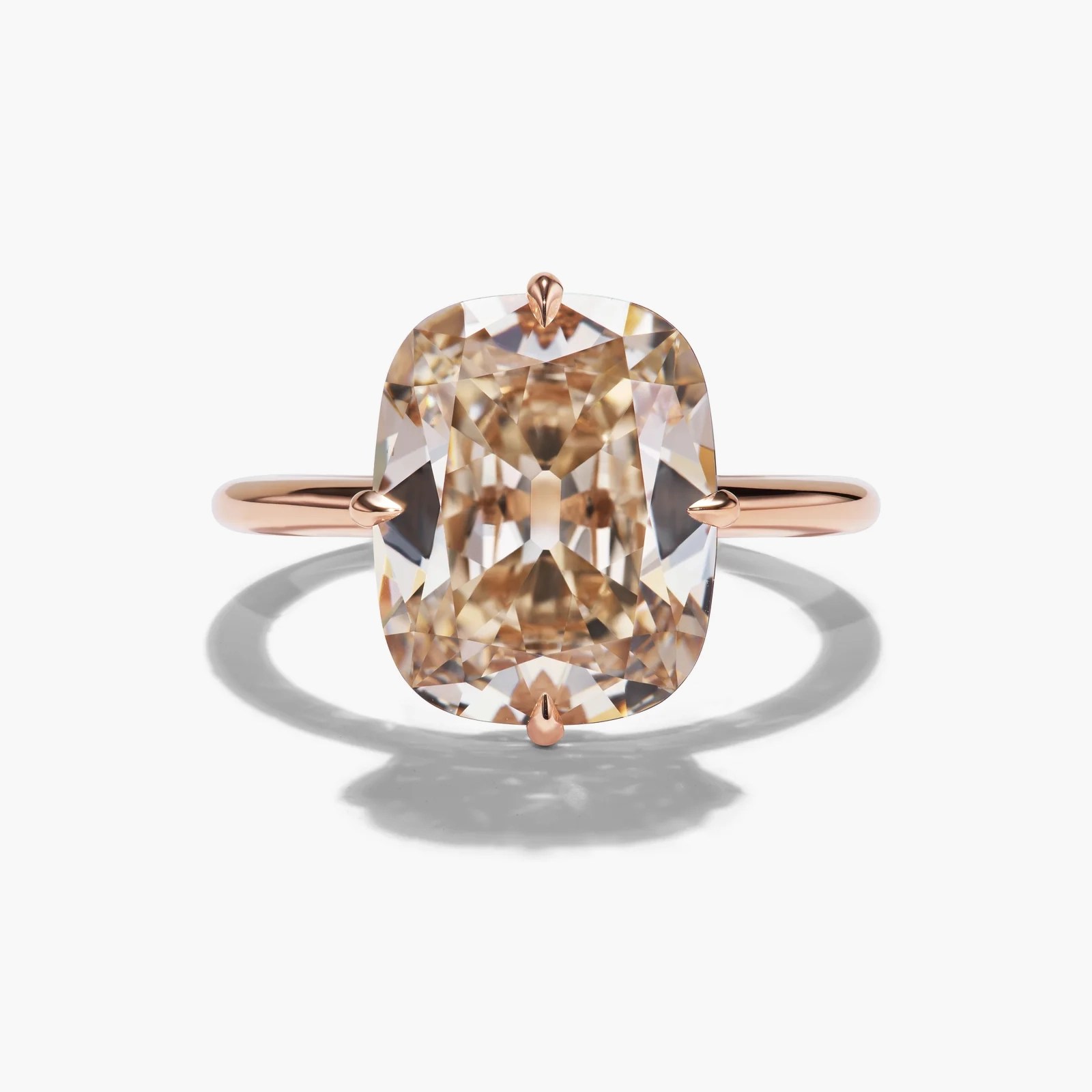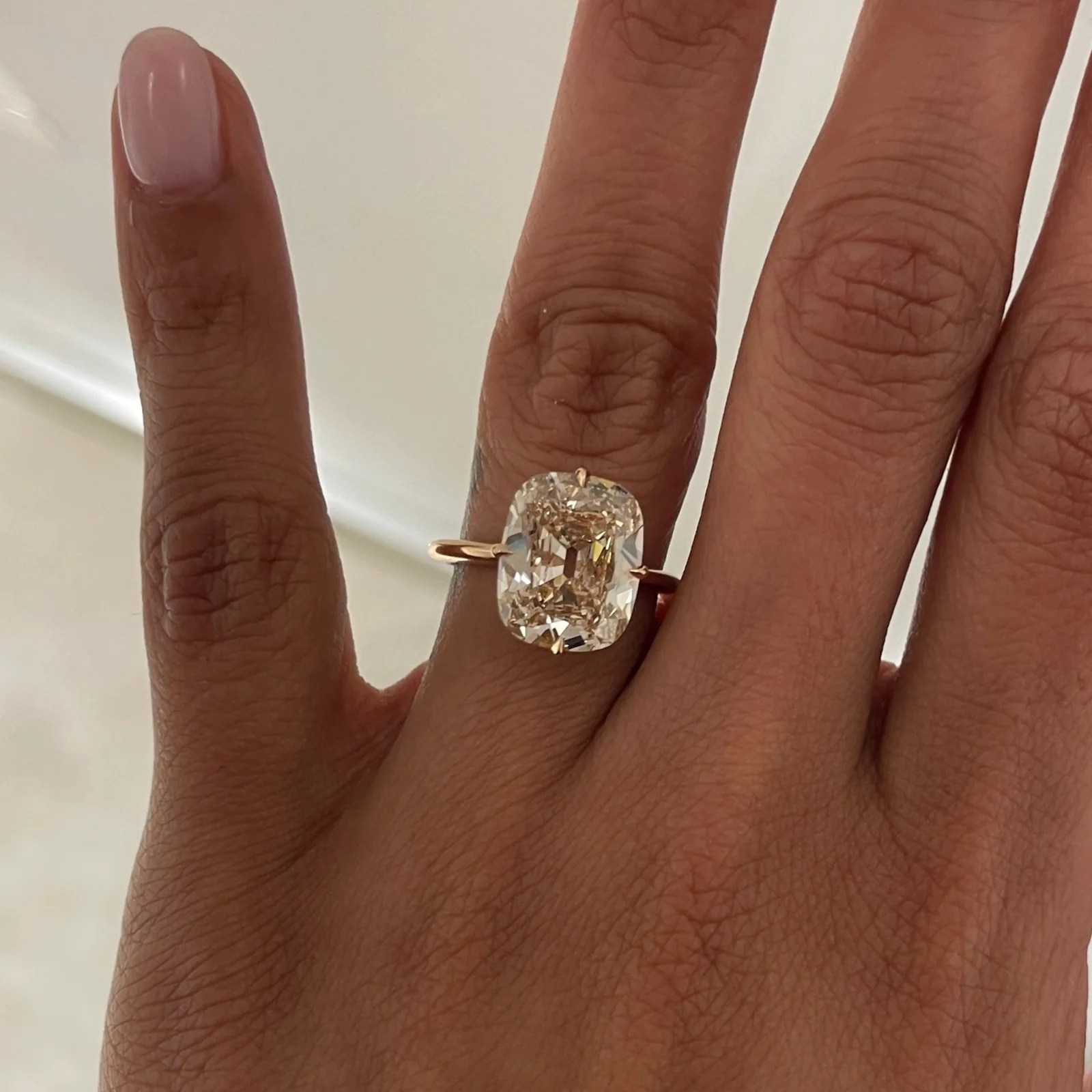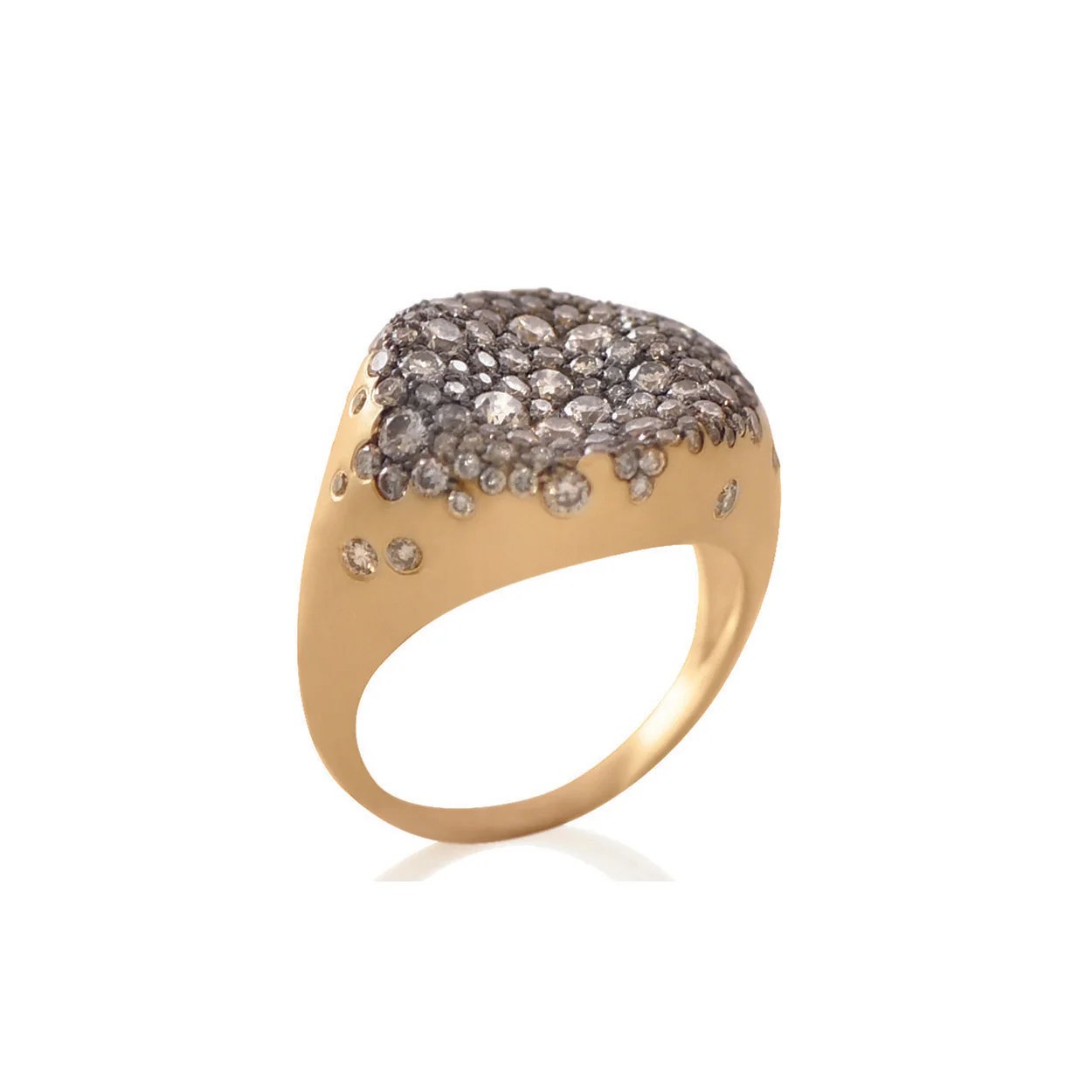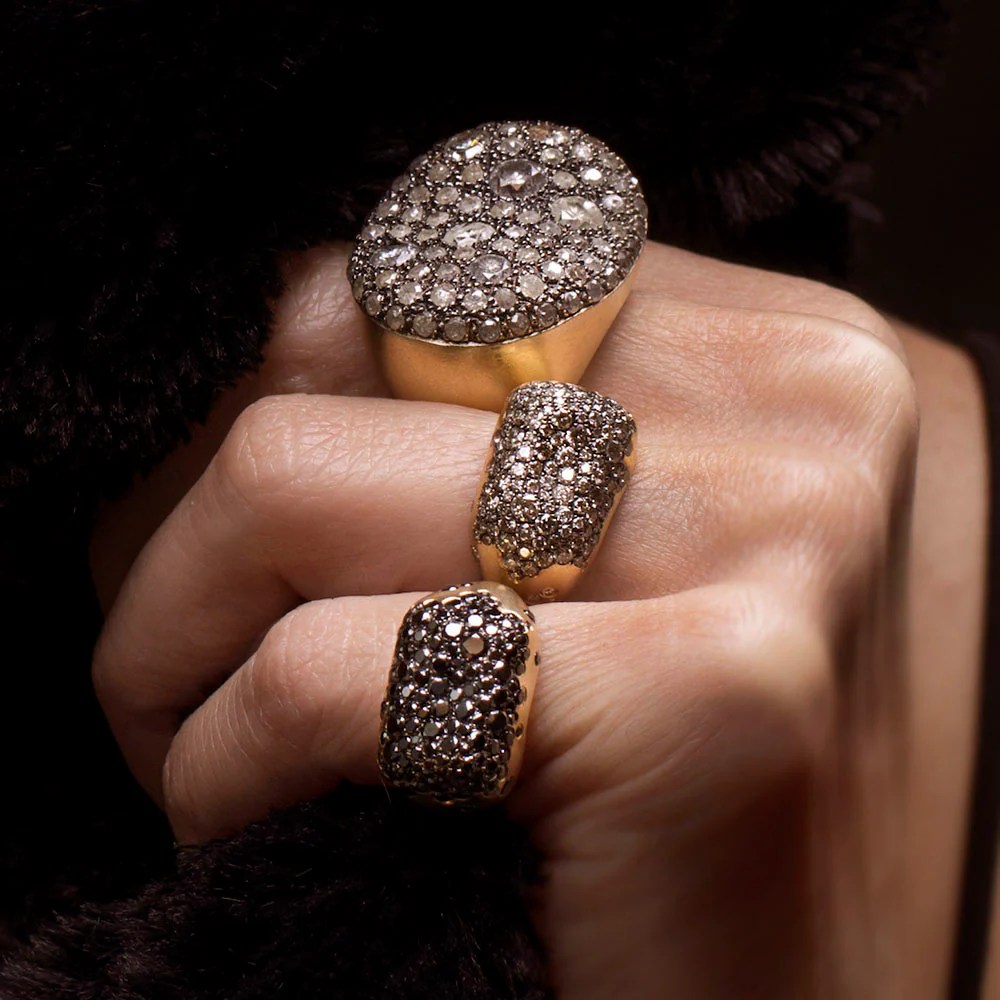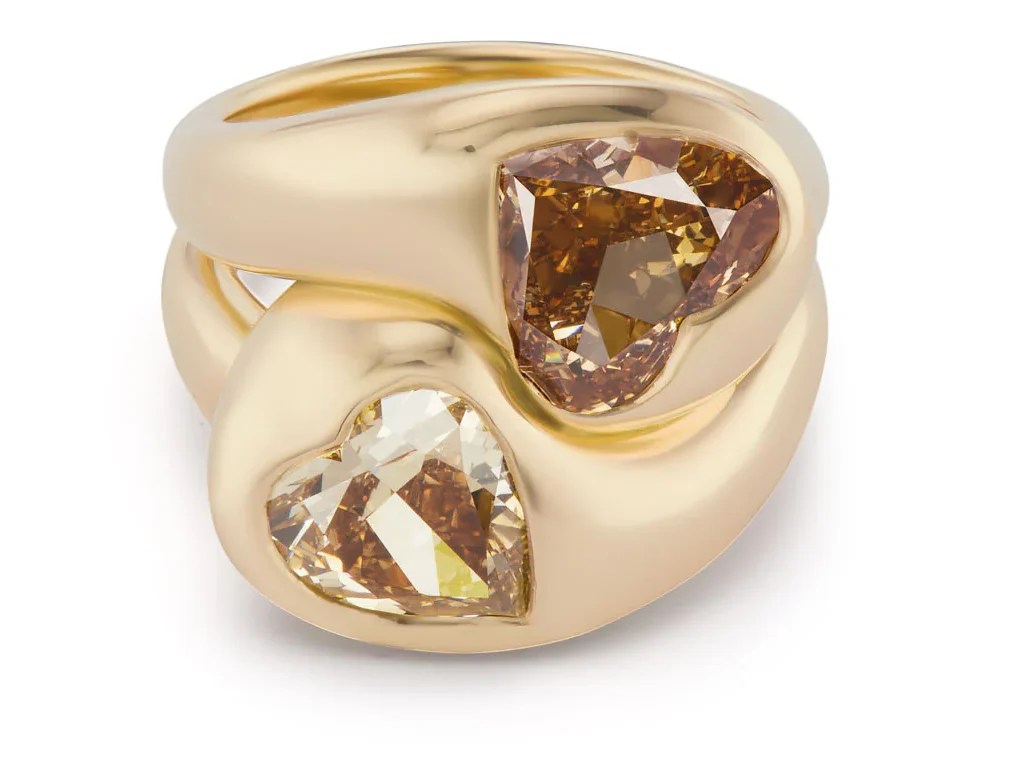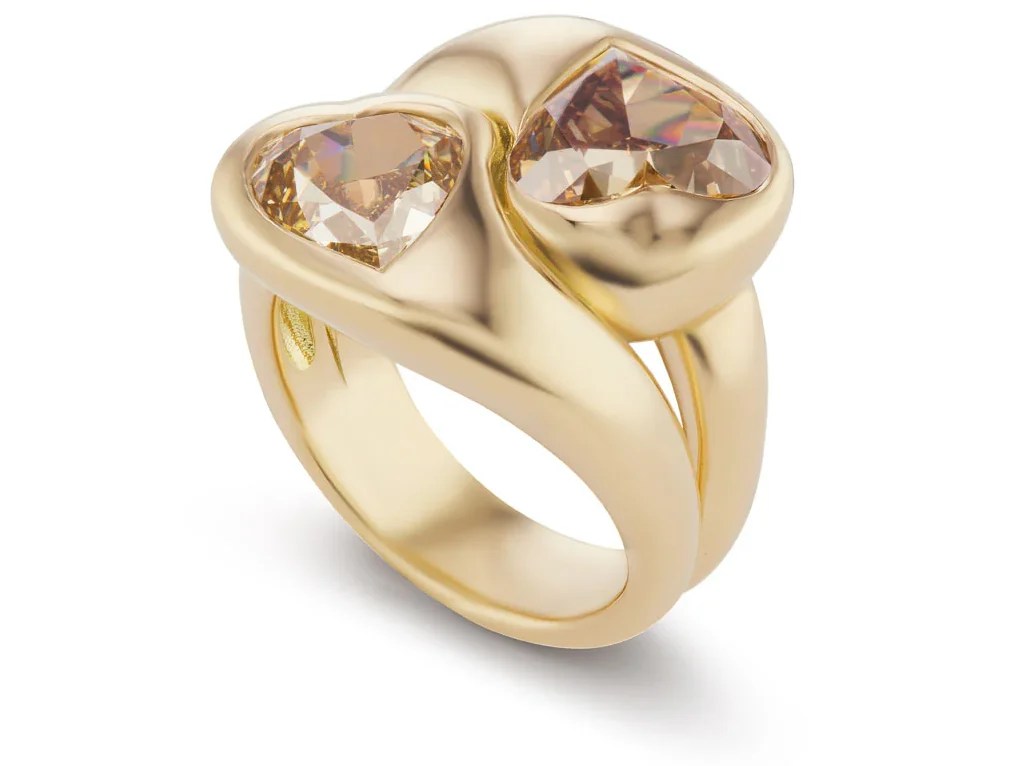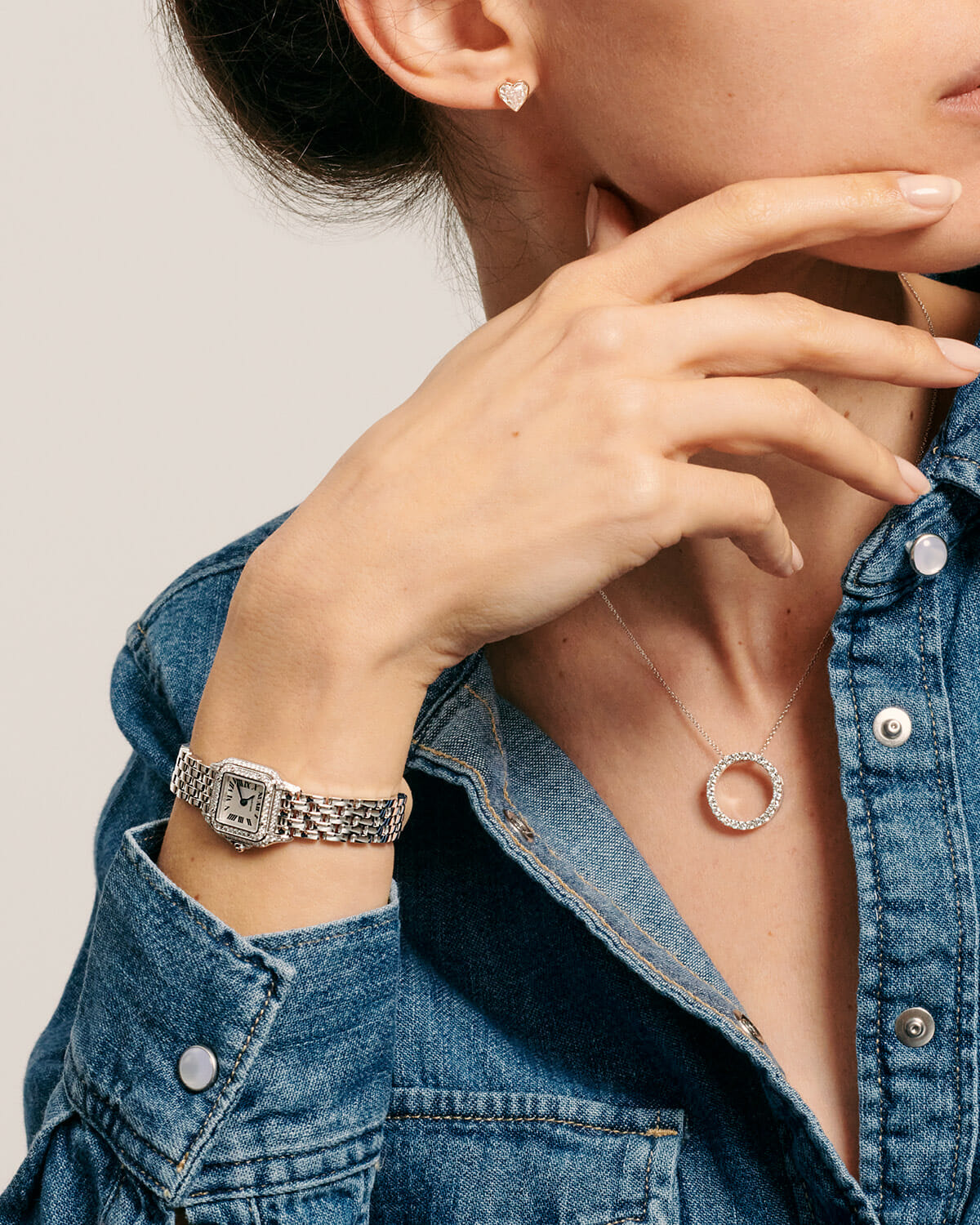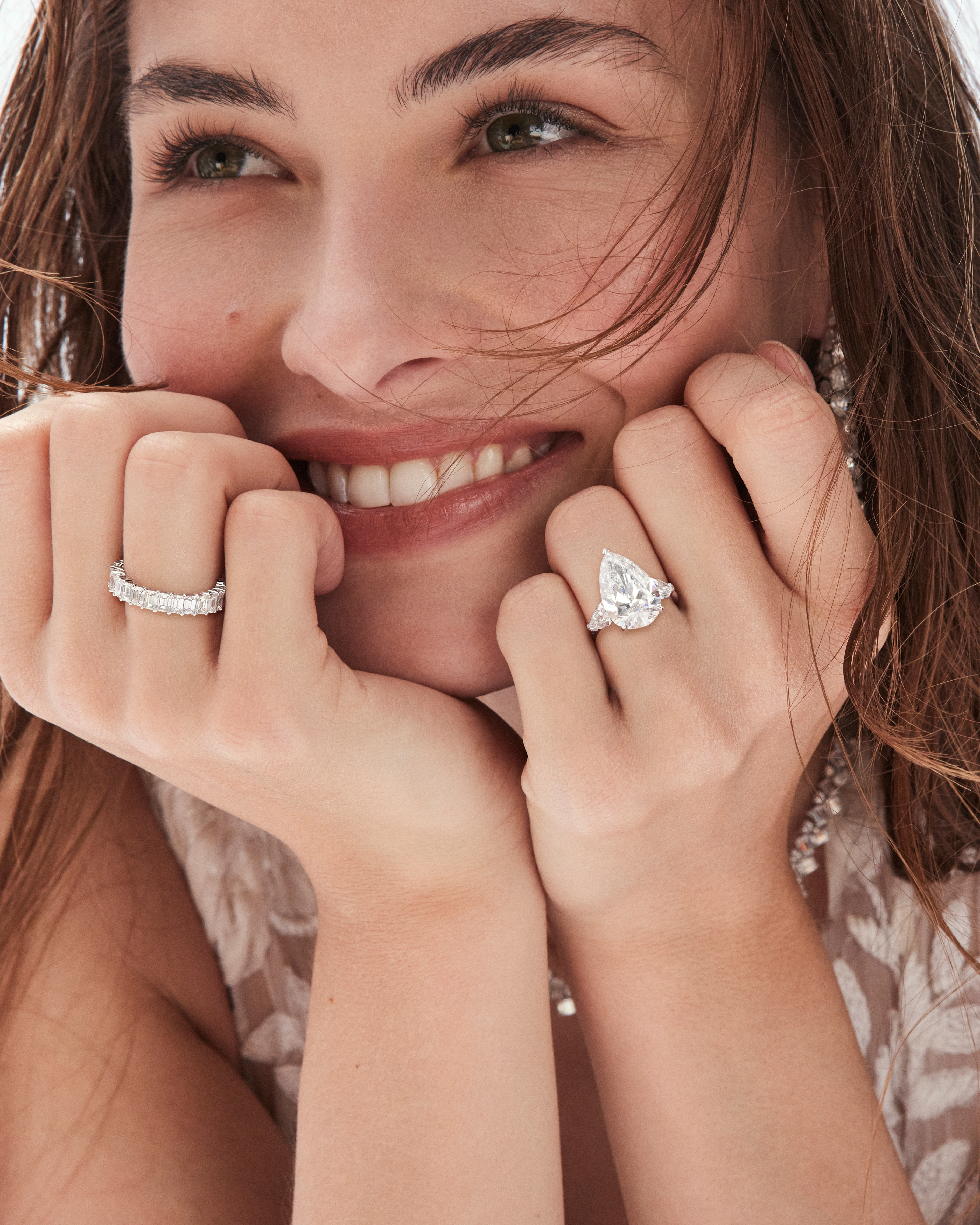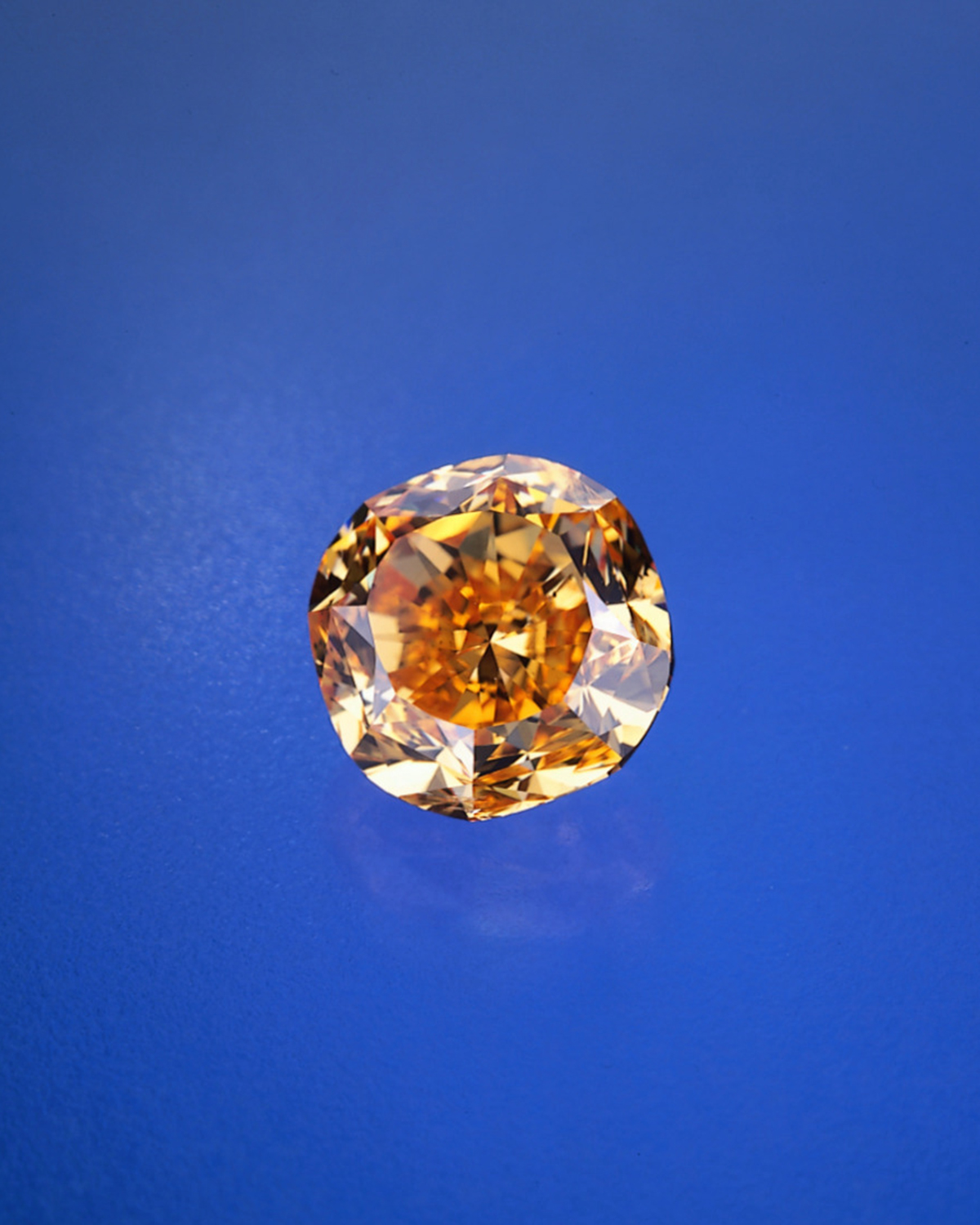Why Champagne Diamonds Are the Toast of the Jewelry World
When your diamonds match your favorite vintage, you know you’re doing something right.


There’s something about the warm, golden glow of a champagne diamond that feels instantly celebratory. Like a glass of fine Champagne—whether it’s Dom Perignon, Piper-Heidsieck or Ruinart—it sets the tone for something fabulous. But unlike bubbly, a champagne diamond won’t disappear by midnight. These luminous natural diamonds are having a major moment, offering a sophisticated alternative to traditional white or yellow stones with a rich palette that feels modern, versatile, and undeniably chic.
Whether you’re shopping for an engagement ring with a twist, a red carpet-worthy cocktail ring, or a signature everyday piece with subtle sparkle, champagne diamonds deliver. “Champagne diamonds are a beautiful way to stand out while still wearing a natural diamond,” says Grant Mobley, diamond expert and jewelry and watch editor of Only Natural Diamonds. “They offer warmth, elegance, and a unique take on timeless luxury.”
Meet the Expert

- Grant Mobley is the Jewelry & Watch Editor of Only Natural Diamonds
- He is a GIA Graduate Diamonds Graduate
- He has over 17 years of jewelry industry experience, starting with growing up in his family’s retail jewelry stores
So, what exactly is a champagne diamond? And how did this once-overlooked stone become a favorite of jewelry designers and celebrities alike? Let’s dive in.
What Is a Champagne Diamond?
A champagne diamond is a natural diamond with a brown body color—sometimes warm and golden, other times deep and smoky—with undertones of yellow that evoke the color of fine French Champagne.
“‘Champagne’ is not an official term for this naturally occurring color in diamonds,” explains Mobley. “It’s a colloquial term that helps to visualize the color, which is why you will not see ‘champagne’ on a diamond grading certificate. Instead, you will see official color descriptors such as fancy light brown or yellowish brown.”
Because no two natural diamonds are identical, you’ll find incredible variety within the category. Some champagne diamonds are pale and sun-kissed, while others lean more intense with hues bordering on cognac or bronze. “It’s common to see these diamonds described by designers with other colloquial terms like nude, fancy brown, cognac, or chocolate,” Mobley says.
What Gives a Champagne Diamond Its Color?
Unlike white diamonds, which are valued for their lack of color, champagne diamonds are celebrated for it. So where does that warm tone come from?
“The color in natural champagne diamonds is most often caused by a distortion of the crystal structure, which results in brown grain lines,” says Mobley. “Those that have a hint of yellow can also contain enough nitrogen impurities to reflect a yellow hue.”
This natural coloring process gives each stone its one-of-a-kind appearance, making champagne diamonds particularly well suited for unique, heirloom-worthy pieces.
The History of Champagne Diamonds
Champagne diamonds have long existed in nature, but they weren’t always prized for their beauty. For years, lighter brown diamonds were considered less desirable than colorless stones and were often used in industrial applications. But in the ’80s and ’90s, jewelry designers—particularly in Australia, where the Argyle mine produced a bounty of colored diamonds—began embracing their natural beauty.
Thanks to this shift in perception, champagne diamonds entered the spotlight as a stylish alternative to traditional white diamonds. Their warm tones paired beautifully with yellow and rose gold, aligning with a broader movement toward more personalized, distinctive jewelry.
Today, the Argyle mine is closed, and natural champagne diamonds are becoming rarer, a factor that only increases their allure for collectors and connoisseurs.

Champagne Diamonds on the Red Carpet
From Hollywood to high fashion, champagne diamonds have emerged as a go-to gem for stars who want something unexpected yet timeless. Their rich, earthy tones glow against the skin and complement a wide range of fashion looks, from sleek minimalism to full-on glamour.
Designers like Lorraine Schwartz have long championed the warm-toned beauty of champagne and so-called “nude diamonds” or “skin tones”, which she’s placed on the likes of Beyoncé, Blake Lively, and Kim Kardashian. These diamonds, often classified as fancy light brown or yellowish brown, radiate a subtle elegance that feels both modern and effortlessly glamorous.
“Champagne diamonds are a beautiful way to stand out while still wearing a natural diamond,” says Mobley. “They offer warmth, elegance, and a unique take on timeless luxury.”
Whether worn as statement earrings, a one-of-a-kind engagement ring, or a dazzling cuff, champagne diamonds bring red carpet dazzle in a palette that flatters every skin tone and style sensibility.
Styling Champagne Diamonds Today
Whether you’re layering dainty diamond pendants or investing in a showstopping cocktail ring, champagne diamonds offer incredible styling flexibility. Their warm tone can lean earthy and beachy or elevated and formal, depending on how they’re set and styled.
Champagne diamonds mix beautifully with other natural diamond colors—white, yellow, brown, even black—creating rich, tonal palettes that feel effortlessly chic. Set in yellow or rose gold, their natural glow is enhanced, while white gold or platinum settings bring out a cooler contrast.
Designers are increasingly showcasing champagne diamonds in fresh silhouettes—from modern bezel-set signets to sculptural drop earrings. The result? Jewelry that feels both trend-forward and timeless.
Mobley sums it up best: “Champagne diamonds are a stunning reminder that natural beauty comes in many shades. Their color tells a story—and that story is uniquely yours.”
Shop Champagne Diamond Jewelry
Get inspired by champagne diamonds from some of our favorite designers.
